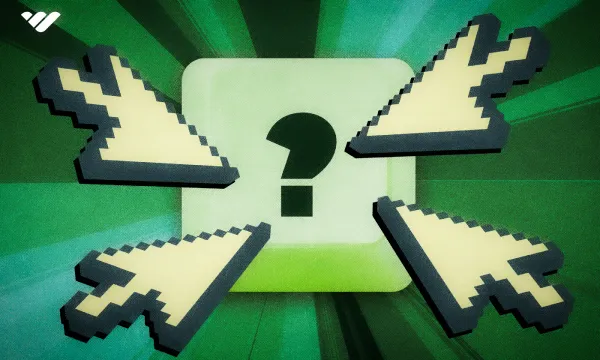SaaS has been around for a while but it’s an industry that’s perpetually tagged with the label “exponential growth”. This can be fantastic if you’re part of the SaaS revolution already or just about to get on board, but it can also lead to a whole lot of pressure to achieve and sustain massive growth figures.
One of the most important things to get right when it comes to your SaaS business is the business model you’re using. Getting your pricing options optimized for both your target market and your software itself will help you keep your revenue exactly where it needs to be, which in turn will keep you growing quickly and sustainably.
So, are you using the right SaaS business model, or should you consider switching to an option that fits your situation better and will take your business to the next level?
The SaaS Business Model Explained
Software-as-a-Service is itself a model of business for a company offering software to its clients. In this model, the software is cloud-based and accessed online as opposed to being purchased and installed locally.
Why sell cloud-based software? Well, the traditional model has its advantages, but software sold that way would generally be paid for as a lump sum. This lump sum could become hefty, especially in the case of enterprise applications—and in fact, the purchase price for plenty of software can be so high as to lock out small or even mid-size companies on a budget since it wouldn’t be worth buying unless useful for enough organizational users. This state of affairs suits neither the buyer nor the seller, and these sorts of inefficiencies in a market tend to spur innovation.
Thus, the SaaS model that we know today, where customers pay on a subscription basis to be granted access to the software. The model has been used for consumer-facing services for a long time. You are most likely using SaaS too, even if you don't know it yet - for example, if you have a cloud-based email account, that’s SaaS!
This cloud delivery model utilized by SaaS businesses is efficient since the software vendor doesn’t necessarily have to host the software themselves. There are third-party cloud services out there that will do so for a fee, meaning that the software vendor doesn’t need to allocate hefty overheads to all of that hardware and space that cloud hosting would require.
The main concern when it comes to SaaS lies in the realm of data security and privacy. Purchasing and installing software locally allows companies or individuals to keep everything in-house, and even offline if so desired. Cloud-hosted servers and subscriptions to software, on the other hand, have more points of vulnerability to breaches. Third-party cloud hosts also have access to a great amount of data, and it’s no surprise that they number among the biggest corporations in the world—names like Google and Amazon (on the back of Amazon Web Services) come to mind.
However, the subscription-based business model employed by SaaS businesses tends to be a primary selling point and one that consumers and companies alike have found worthwhile. It’s no surprise, therefore, that most SaaS businesses persist with flat subscriptions—but, is subscription the best SaaS Business Model for you?
Is Subscription the Best SaaS Business Model?
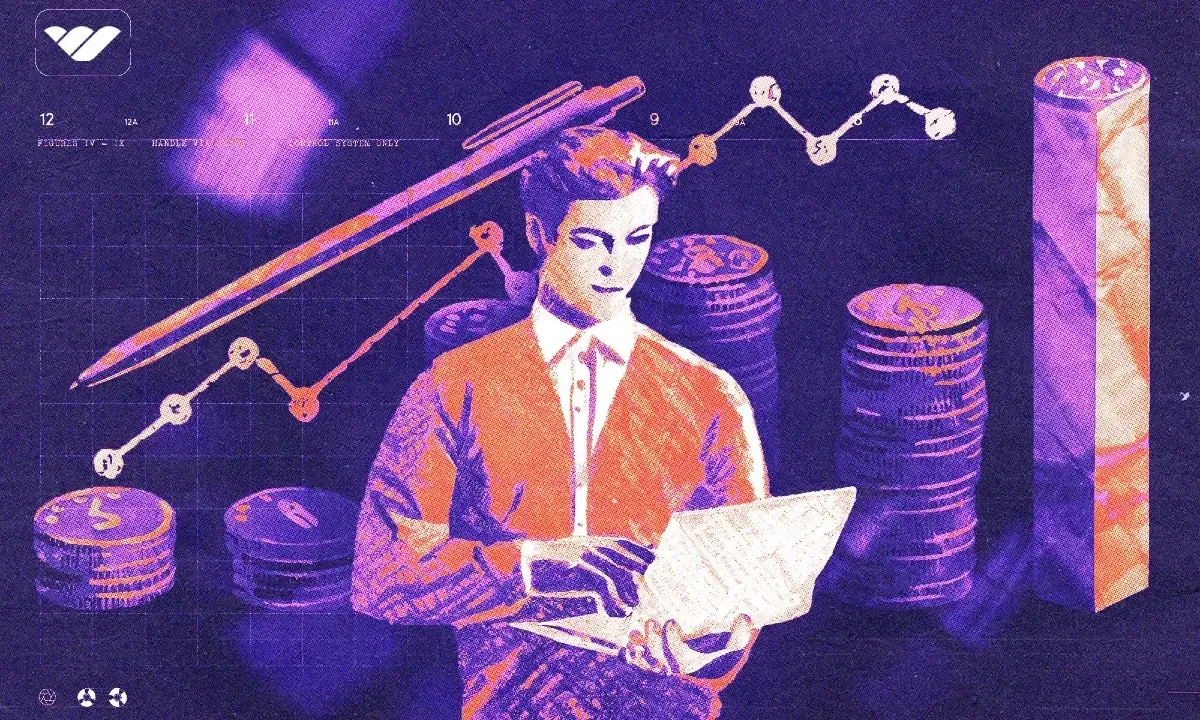
The flat subscription-based revenue model most commonly used in SaaS is highly valuable and features several advantages, one of the major ones being that it guarantees recurring revenue. This is one of the best ways to get paid as a business owner since it doesn’t actually stop until something goes wrong, and it generates steady cash flow.
Even firms in industries long known for lump sum revenues, such as car companies, are trying their utmost to generate recurring revenue—although the means they are attempting to use in order to do so are questionable.
So, why give up the predictable revenue stream that the subscription-based model creates? For one thing, customers are free to cancel at any time. This isn’t a bad thing, but your pricing strategy is more important than you might think.
Risk of Early Cancellation

With traditional product pricing, a company will price a product by wrapping up all of the costs involved in manufacturing and marketing that product, then adding their desired profit margin. So, to take an extremely simple example, if something costs $1000, it might have cost $400 to produce and $100 to market, the remaining $500 being profit.
The advantage of software is that once it’s written and tested, it can generally be replicated infinitely and sold. That’s what makes software such a lucrative business. However, you can’t completely ignore those initial development costs, and your marketing spend remains the same.
So, if you’re now offering your product at $50 per month, there’s the risk that the customer cancels after the first month. You still spent $100 on marketing (or rather on acquiring that customer, or your customer acquisition cost) so you took a loss even though you did make a sale.
That’s a huge challenge that SaaS companies face. They can’t try and get all their acquisition costs covered in the first billing period for fear of being too expensive, but they also need to try and get those acquisition costs paid off as early into the subscription as possible to start generating a profit.
Pricing Inefficiency
One of the main problems SaaS businesses face is establishing the perfect pricing paradigm for their customers. Many solve this by setting up bespoke pricing options on a customer-by-customer basis, but even this approach has significant downsides since many customers may still pull the plug on the deal after this, thereby wasting all of the time spent on drawing up the terms of the deal.
SaaS firms focusing on B2B businesses tend to suffer from this issue more so than B2C SaaS firms since even having multiple subscription options may not be enough to do the trick. One client may require not just a different level of features to another, but a different number of users.
Going for a pure per-client subscription business model is a huge disadvantage in these cases because you might not charge big clients enough, or be too expensive for smaller clients—or both.
6 Other SaaS Business Models to Consider
So, if your business may be vulnerable to some of the downsides of subscriptions, here are six different options to consider!
#1. Tiered Pricing
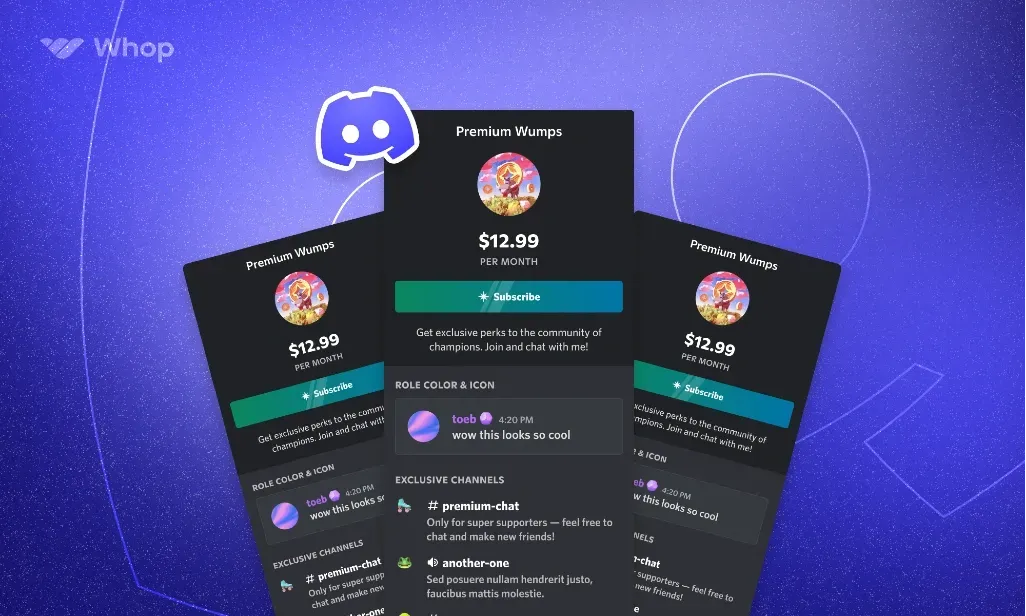
Tiered Pricing is an extremely efficient business model for SaaS businesses because it gives customers the option to choose different levels of pricing that correspond to the features or functionality that they want.
This would, for example, lock some of the more powerful features of your software behind a premium tier targeting expert users, which means that lower-level users don’t have to pay for something they won’t use. On the other hand, you then have the opportunity to provide learning resources or training to these lower-level users and upsell them to your higher tiers, meaning the potential for greater revenue per customer.
Feature differentiation is one of the most important things when implementing tiered pricing, with the value proposition of each tier being clear to customers. This helps with upselling but also ensures that your customers know that they’re getting exactly what they’re paying for. They are then free to move up or down your pricing tiers as their needs change, or as you work with them to better understand and use your software.
#2. Freemium
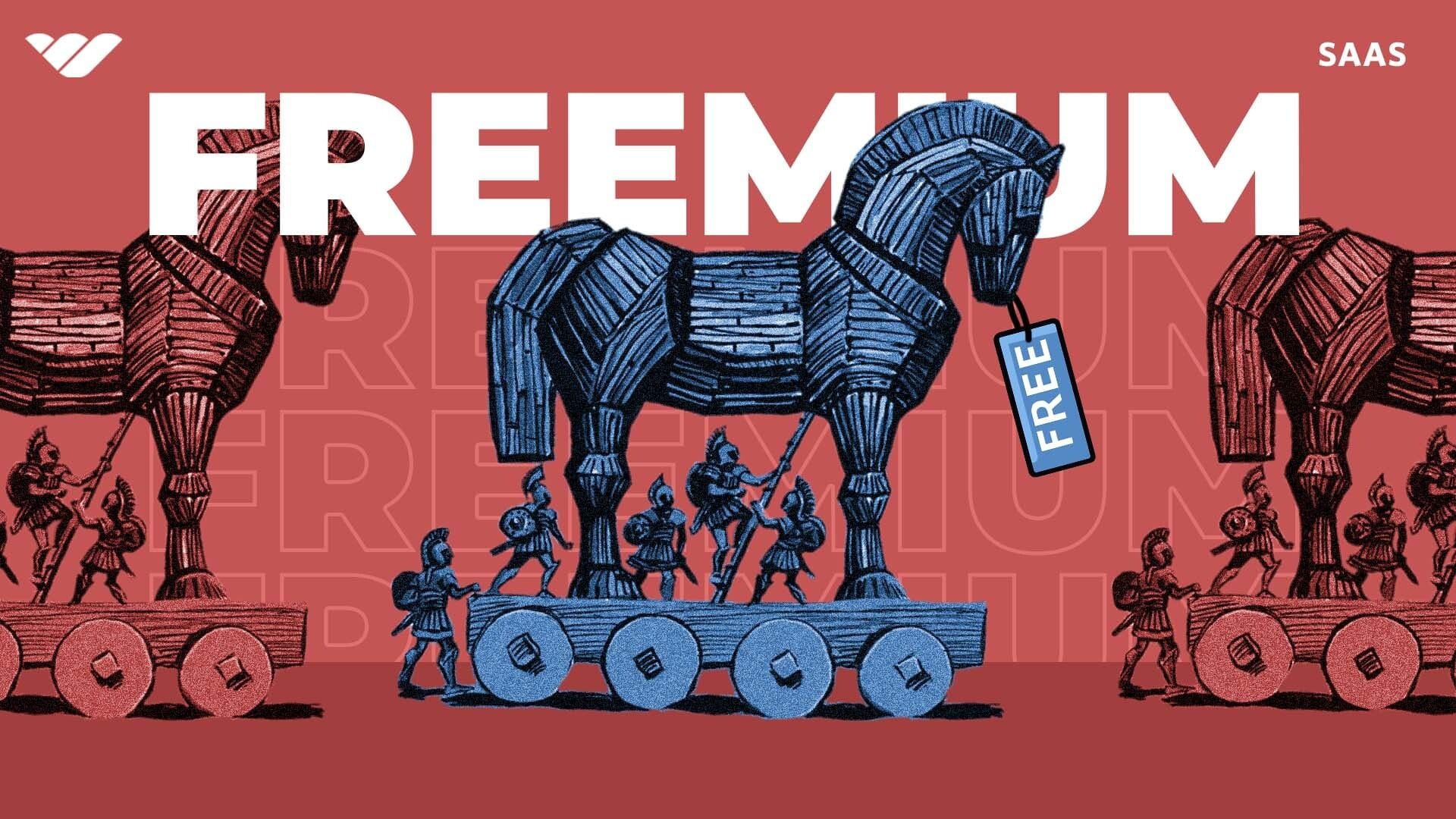
Freemium, which combines the words ‘free’ and ‘premium’, is somewhat infamous when it comes to industries such as video games, but you can look at it as a useful version of tiered pricing when it comes to SaaS.
You’re not trying to trick players into buying overpriced loot boxes here; rather, the model has you offering a basic and ideally useful version of your software for free with an upgraded set of features behind your paywall for users who want them.
It can be quite difficult to convert free users into paid users since that first payment is always a significant hurdle for a consumer to hop over, but this is countered by the fact that your marketing spend can be a lot less since people will be more willing to try a free product (if they can find it). That’s why discoverability is important, and getting your software listed on major app stores or digital marketplaces like Whop is really important.
It’s also possible to limit the amount of usage free users have, rather than what features they use. While you may never subscribe to YouTube Premium just to be able to download videos, you might actually sign up for a video editor like Descript in order to be able to produce more than an hour of content at a time.
#3. Per User Pricing
Per user pricing is an excellent option for SaaS businesses targeting other businesses, or B2B SaaS firms. These target businesses are called ‘logos’ and the flat subscription model falls on its face here because the profile of these logos may be radically different.
Let’s say, for example, that you have a project management software that you’re able to sell to two logos. One is a start-up, and it’s going to be used by the entire workforce of 15 people. The other is only going to have its project teams use it, but they alone number 800. Can you now charge both companies the same price?
You would try to if you were a traditional software firm, and even some SaaS businesses fail to see the problem here. Per user pricing is a great answer to this sort of situation, since you can tell both clients that you’ll charge them a fee-based on the number of users who they want to sign up. This could change on a month-to-month basis, especially in the case of the larger company, but it does mean you’ll be reaping the rewards of signing up such a big client.
Additionally, per user pricing as a model also gives you an additional data stream that is both important and easy to capture. If you allow firms to change the number of users regularly, you’ll be able to develop an idea of how their usage is trending. If they’re signing up more users, they are recognizing the value of your software, which might trigger cross-sell potential.
On the other hand, if they’re cutting down the number of users every month, it could be an early warning sign that something’s not right. It’s a signal for you to get in touch and provide some customer service—you could furnish them with materials that help them to use your product better and therefore understand and utilize all of its value, for instance, if you find out that they’re starting to regard your software as less useful.
#4. Usage-Based Pricing
Usage-based pricing, also called the per-per-use model, is a good accompaniment to per user pricing if you’re dealing with other businesses, but it just as easily applies to individual users. As the name suggests, your pricing strategy here is based on exactly how much your users are using your software.
You might set this up using multiple usage tiers, or usage thresholds you’ll use when billing. The key feature here is that customers are being billed using specific and measurable metrics, whether it’s hours logged in, amount of data stored, active users per day, API calls, or number of transactions.
The main advantage of usage-based pricing is that it offers an extremely fair and flexible means of billing customers for only as much as they use. This will remove any possibility of customers feeling as if they’re paying for something they don’t use, which can be a significant reason for churn in SaaS.
On the flip side, it may also remove the customer satisfaction element akin to a buffet that they normally experience when using SaaS. Netflix can feel like a great investment when you spend a weekend binging, for example. Many people will try to compare usage-based pricing to a taxi fare (or more applicably that SaaS taxi, Uber) but that’s perhaps a little disingenuous given the way software scales, unlike cars which need to be fueled and experience wear and tear when driven.
#5. Open Source
This might be a controversial model given that the entire point of this guide is to transform your business into a realm of greater profitability. Open source does mean putting your codebase out there into the public domain, but there are ways to monetize so hear us out!
One of the main benefits of going open source, aside from the reputational and branding gains, is the fact that users can be an incredible source of innovation. Some of the very best software on the market today is open source, and this collaborative element means that you’re going to get a very robust, customizable, transparent, and thoroughly community-tested product out of it as long as your project attracts enough interest.
Monetization and revenue is the challenge, but it’s not impossible. The best way to do this tends to be via support services and consulting fees, and the usage of your software will be defined under specific licenses that cover modification, use, and distribution. Still, as the leader of the project, who better for firms to bring on to help them deploy and use the software correctly?
Besides, open source doesn’t mean every single piece of software is being thrown into the public domain. The best open source SaaS companies are extremely clear about which free features they’ll provide in their open core and which they will retain as premium.
#6. White Labeling
White Labeling is an extremely powerful SaaS business model if you reckon that you’ve got some serious developing horsepower but are either somewhat lacking or don’t want to invest as many resources into the marketing side of things.
Quite simply, white labeling is where you’ll develop a software and sell it on to another firm who’ll stamp it with their branding and sell it as their own. This lets you focus purely on the development and testing of the software, although you will have to market your firm in terms of being a quality developer who can take on commissioned software projects on behalf of other businesses.
One of the main disadvantages of white labeling is that building a brand can be difficult since your products end up bearing another name. That said, you should be able to develop your reputation in the industry quite quickly and become known as the firm that’s really behind the product even though exclusivity belongs to the reseller.
White labeling may also be an interesting model for your SaaS business in terms of playing the reseller. If you have, or believe you can achieve the sort of reach required for profitable distribution of the software, you can sign a deal with a white label provider and profit off the synergy between their expertise and your reach and branding.
Which Firms Use These Business Models?
Now that you know all about these 6 top SaaS business models, you might be wondering whether other companies use these models successfully. As it happens, there are lots of top SaaS businesses that use all of the above models, but we’ve picked out a few noteworthy examples for you.
#1. Tiered Pricing - Shopify
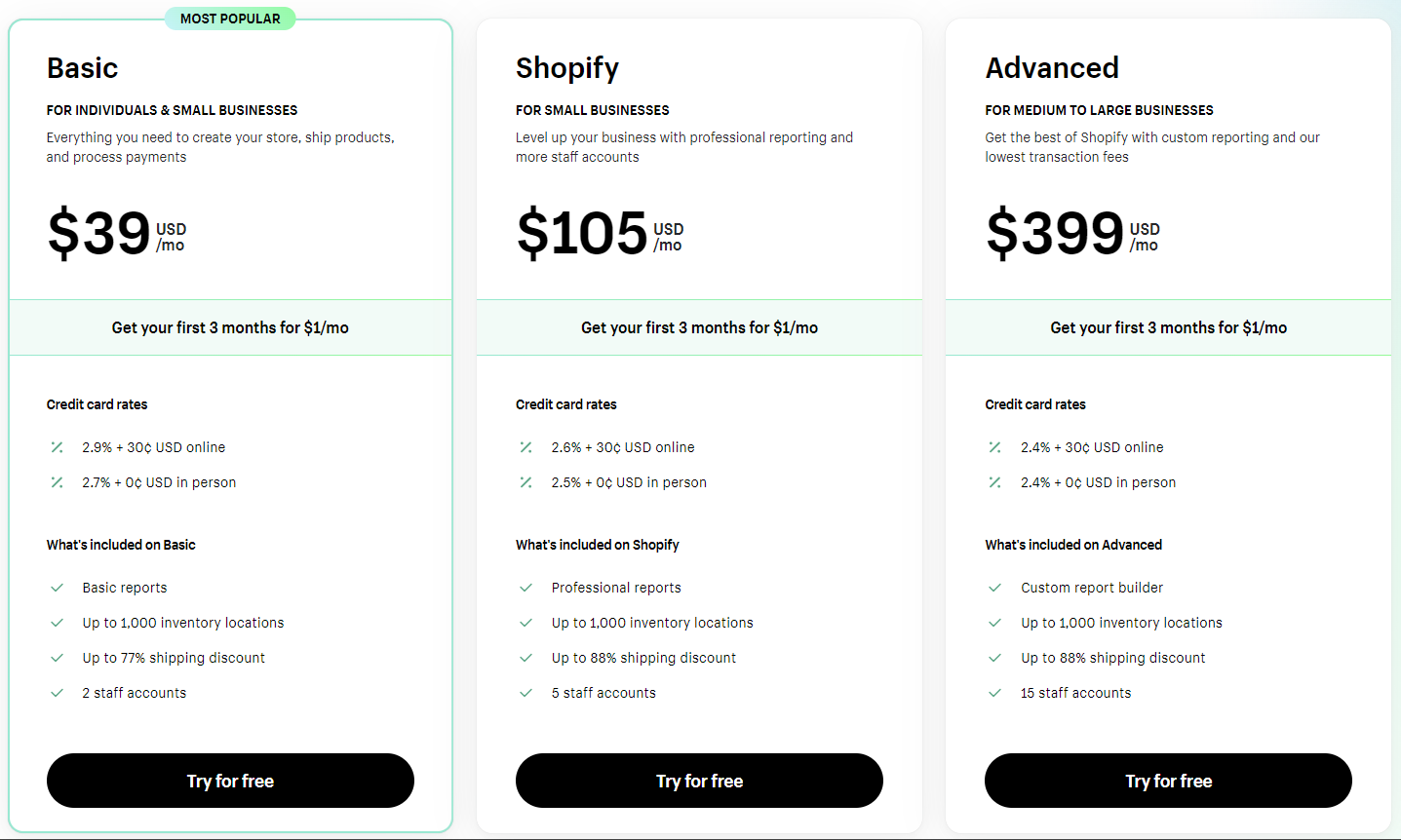
Shopify probably needs no introduction whether you’re a business owner or a consumer. The Canadian ecommerce giant uses a tiered pricing model for its merchants, with basic reporting functions and a couple of staff logins paired for small businesses or individuals alongside two more advanced options. Pricing picks up as you go into the more advanced plans, but the percentage of transactions charged by Shopify is lowered—this suits bigger sellers who can afford a flat fee in the hundreds and counts a 0.5% transaction cut as significant thanks to their sales volume.
#2. Freemium - GMX
GMX is an email provider that’s been around since 1997, and while it’s most popular in German-speaking countries, it also owns French webmail service Caramail and American domain mail.com. GMX operates on a freemium basis mainly by limiting users to a certain amount of storage, so if they want more they need to upgrade to a premium plan. Spotify is another example of freemium SaaS even though its free version is restrictive, while Dropbox is also a resounding success.
#3. Per User Pricing - Slack

Per user pricing is extremely popular in the productivity niche, and well-known names like Slack, Asana, and Salesforce all deploy their own forms of per user pricing. Some firms do tend to get criticized for having sharp price shocks when clients have to move between tiers, but Slack in particular is often credited for doing it right by charging not just per ‘seat’ but per active user.
#4. Usage-Based Pricing - HubSpot

Taking a glance at HubSpot’s pricing page can lead to a fit of dizziness, but if you take your time and study what they’ve done, it’s clear that they’ve got an extremely diverse set of payment plans catering to usage. If you’re only just getting started with your SaaS business you might not be able to emulate them and create upwards of 20 different plans like that, but there might definitely be elements you can take from their implementation.
#5. Open Source - MongoDB

There are plenty of open source companies valued in the billions, and MongoDB (at a massive market capitalization of almost $30B) is one of them. The company has been extremely careful when deciding which features to put in their open core and which to keep as premium. Consistency and transparency are key, and MongoDB is one of many examples when it comes to getting this model right.
#6. White Labeling - Twilio
This one’s a little harder to pin down since the entire point of white labeling is to put a different brand on the product and sell it under a bigger brand name. You might consider companies like Twilio to be white label providers, since they provide their APIs to customers who then build communication apps in their own name.
When to Stick with Subscriptions
Subscriptions are a powerful business model for a variety of reasons, and they offer a vast improvement on the traditional software licensing model where smaller clients are priced out of the conversation more often than not.
While our 6 SaaS business models above can definitely take your business to the next level under the right conditions, it’s important to remember that not every software needs a complicated pricing structure. If you have a software offering that’s simple and effective without too many features that can drastically alter its use, and a predominantly consumer customer base, basic subscriptions will probably do just fine.
How to Pick the Right SaaS Business Model
When deciding whether to stick with a flat subscription model or choose one of the six different models we detailed, it’s important to consider first your client base and then what your software itself can do.
First of all, understanding who your customers are is key. In B2C SaaS, for example, you might find yourself having to decide between flat subscriptions or freemium. The fact is, ordinary people are far more likely to try a free product than have to pay for one first. Even if you offer a free trial for a premium product, you’re not going to see as much adoption as you would by positioning it as truly free.
From then on, the challenge is two-fold. Delight your free users by providing them with enough features to consider your software an asset, and drive premium adoption by combining your reputation for quality with the advanced features behind your paywall. If you can manage this, you’ll likely be able to secure a far greater user base than if you went ahead purely with paid subscriptions from the get-go.
This holds for B2B SaaS as well. Here you might be considering options like tiered pricing, per user pricing, or usage-based pricing. Similarly, it’s important to be able to provide a great value proposition for all clients via your business model, which can help you ensure retention for longer periods and maximize customer lifetime value.
Your software itself may play a part in your decision to choose one model over another. If your software only really has one possible package and you don’t think you can separate out features to create two solid tiers, then tiered pricing is naturally out of the window. Freemium might also be out, unless you plan on monetizing via ads.
The decision to move into open sourcing or white labeling might also have some nuance to be aware of. Revenue generation is the main challenge when it comes to the open source model, and it’s extremely important to make those crucial strategic decisions early on as to what’s going to be premium and what’ll be in the open core. Changing direction later on can be extremely costly, and transparency is key.
With white labeling, you do need to be aware of the challenges in terms of marketing and brand-building. The entire point of the business model is to stay under the radar and let a bigger brand sell your software, so developing your own street cred as a top-notch white label provider is important but you need to navigate it in the right way.
So, there’s no one-size fits all model when it comes to SaaS, but irrespective of the size and specialty of your business, you’ll have at least a few great SaaS business models to consider!
This table sums up some of the key differences between the models:
| SaaS Model | Target Audience | Pricing Structure | Revenue Predictability | Customer Acquisition Complexity | Best For |
|---|---|---|---|---|---|
| Tiered Pricing | Varied size businesses | Multiple levels based on features | Moderate to High | Moderate | Businesses with scalable services |
| Freemium | Individuals & businesses | Basic features free, pay for premium | Low to Moderate | Low | Mass market, entry-level users |
| Per User Pricing | B2B, varying company sizes | Charged per user | High | Moderate | B2B with variable user numbers |
| Usage-Based Pricing | Businesses & individuals | Charged based on usage metrics | Variable | Moderate | Services with measurable usage |
| Open Source | Developers, tech-savvy users | Free, charges for additional services | Low | High | Community-driven projects |
| White Labeling | Developers, B2B | Sold to resellers, branded by them | High | Moderate to High | Businesses focusing on product development |
Maximizing Your SaaS Business Model’s Potential
Once you’ve picked out and implemented your new SaaS business models, you’re well on the way to making your SaaS venture a success! However, there are still things you can do to ensure that everything's right on track.
Choosing the Right SaaS Management Software
First of all, the right SaaS management software will help you stay in full control of your business, managing your clients and your revenues while also giving you a leg up in terms of controlling churn and maximizing retention. The right SaaS subscription management software will support the business model you choose, whether it’s flat subscriptions or one of the options we’ve presented above, and it’ll also do more than just execute payments and billing. For the full scoop, check out this guide!
Staying On Top of SaaS Metrics
We’ve mentioned churn and retention a couple of times now, and while absolutely crucial to running any SaaS business, they’re just two out of many important SaaS metrics business owners need to stay on top of. If you’d like to learn more about churn and retention as well as other factors such as customer lifetime value that we’ve touched on in this article, here’s a great read that’ll get you right up to speed.
SaaS Business Models of the Future
As the internet continues to develop and SaaS as an industry evolves, new ways to manage SaaS businesses continue to emerge. Artificial Intelligence (AI) for instance has taken over the zeitgeist and become one of the most popular forms of software products in recent months, and this in turn has spurred fresh thinking about how to monetize software.
This tweet from Steven Tay, formerly of frontend cloud provider Vercel, says it all:
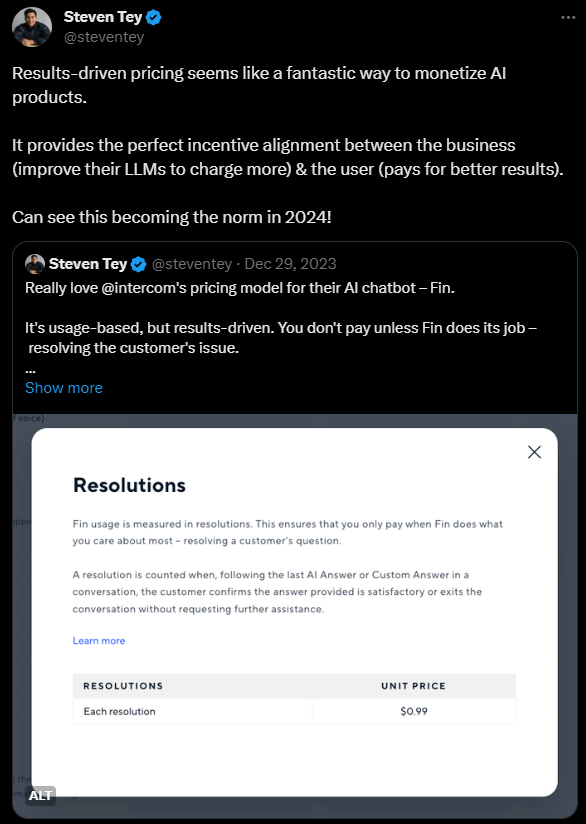
As Tey points out, results-driven pricing brings SaaS businesses and their customers into even better alignment with business models that incorporate a results-driven element. The particular example he points out offers a blueprint for SaaS businesses willing to take risks and back themselves to make good on their promises.
Optimize Your Business With Whop!
Taking your SaaS business to the next level might be a challenge, but it doesn’t have to be difficult! By considering a shift from a flat subscription model to a tiered, per use, usage-based, or even open source model, you can truly allow your software to shine by pricing it in the most efficient way possible given your client profile.
➡️ The easiest way to get this done is by listing your SaaS business on Whop! From payments and billing to Merchant of Record services and in-depth business analytics, Whop provides it all—it’s your one-stop shop for everything you need to set up and offer your customers the perfect pricing packages. Get set up now or talk to the team at Whop today!



![The Best SaaS Subscription Management Software [2024]](/blog/content/images/size/w600/2023/11/SaaS-management.webp)

